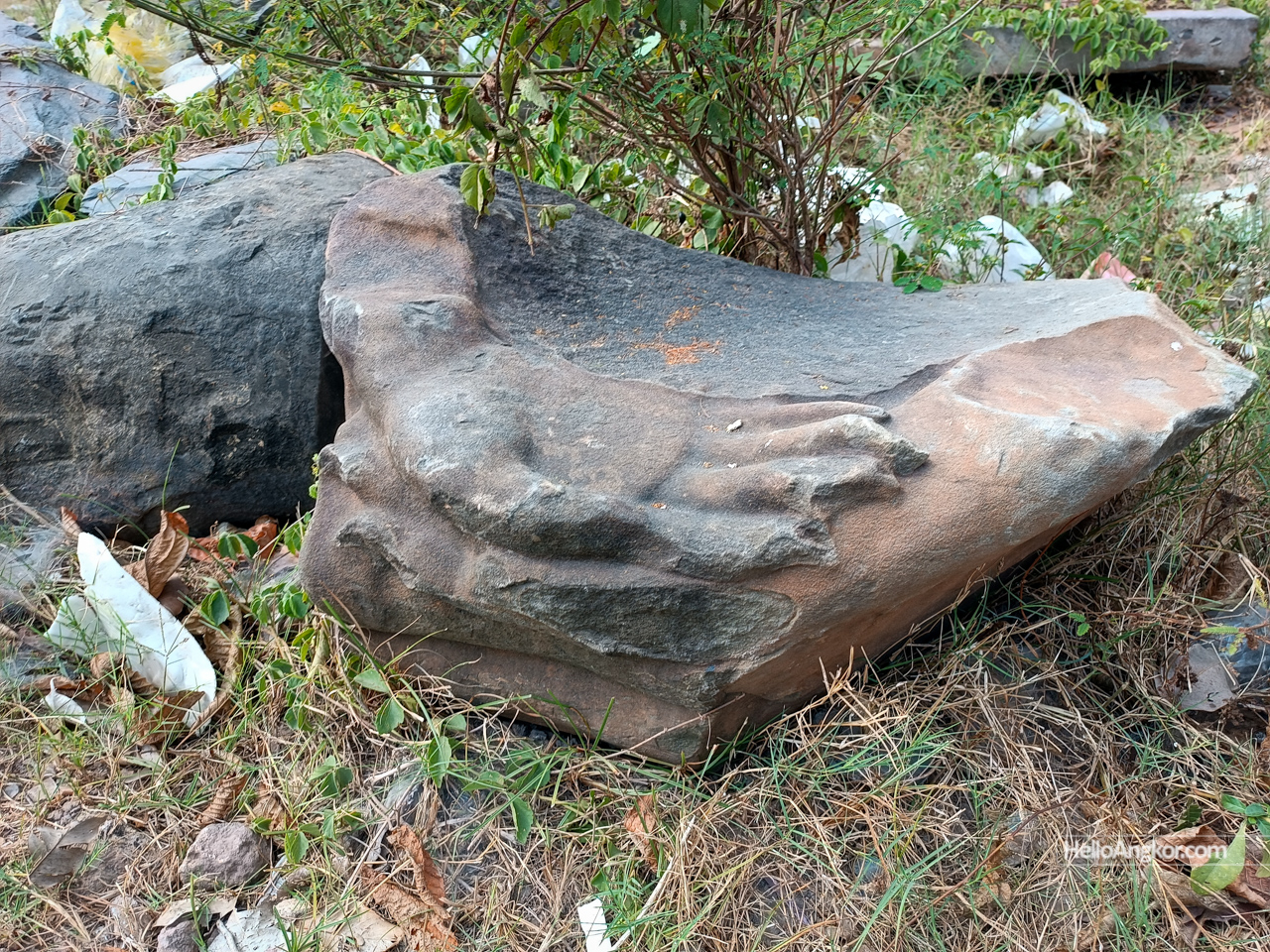Another important site located in the Angkor Borei area, is archaeologically famed for the discovery of an ancient burial site with remains dated between 200 BC and 200 AD. The site today features a contemporary pagoda and a recently constructed shrine in Angkorian style, even making use of laterite which looks quite nice.
Most fascinating are the remnants at the site, put to use by the monks as tables and chairs or otherwise scattered around the grounds, also, a section of the buttress wall appears to be built with recycled laterite. Some pieces would appear to be of pre-Angkorian origin while other pieces are certainly from an 11th-century temple noting a colonnette fragment. The Buddha’s head kept in the pagoda is also quite interesting, it has an ancient style but may well be a recreation.
Among the scattered pieces are the fragment of a Buddha, shale slabs, shale pedestal sections, and the fragment of linga.


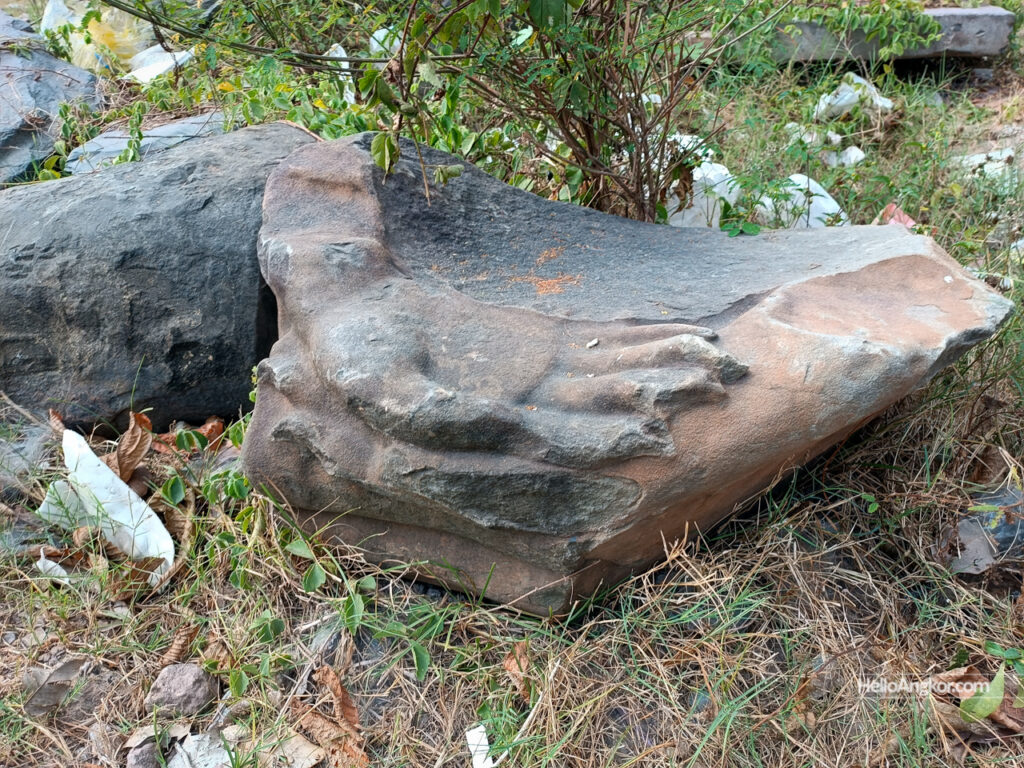
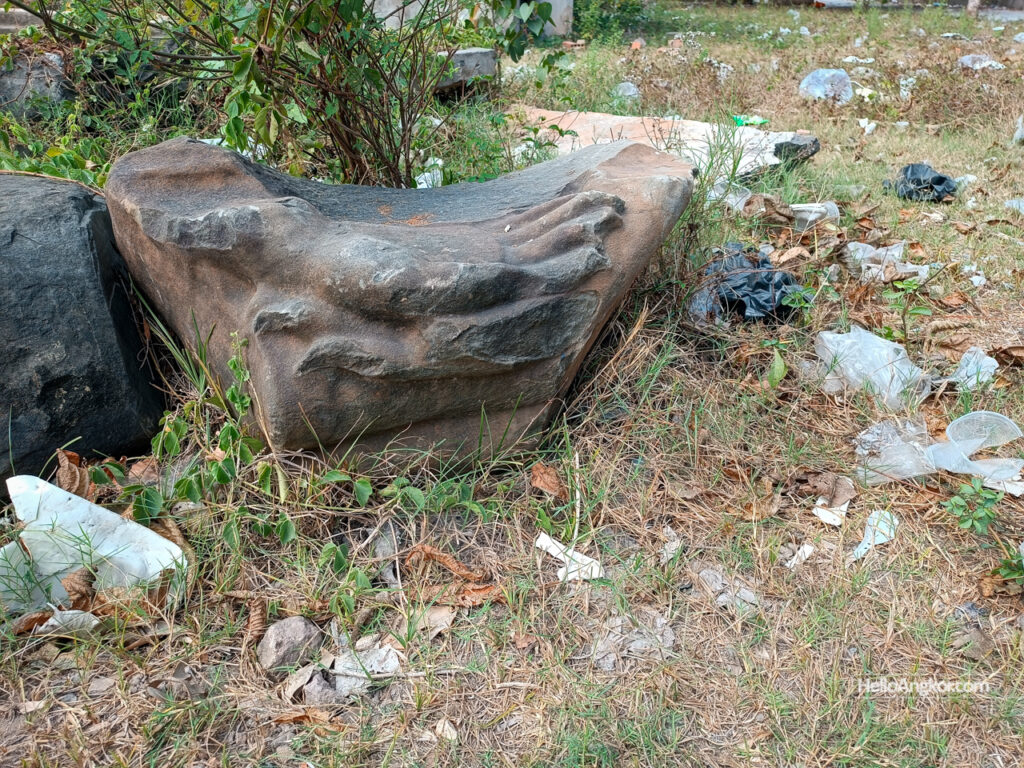

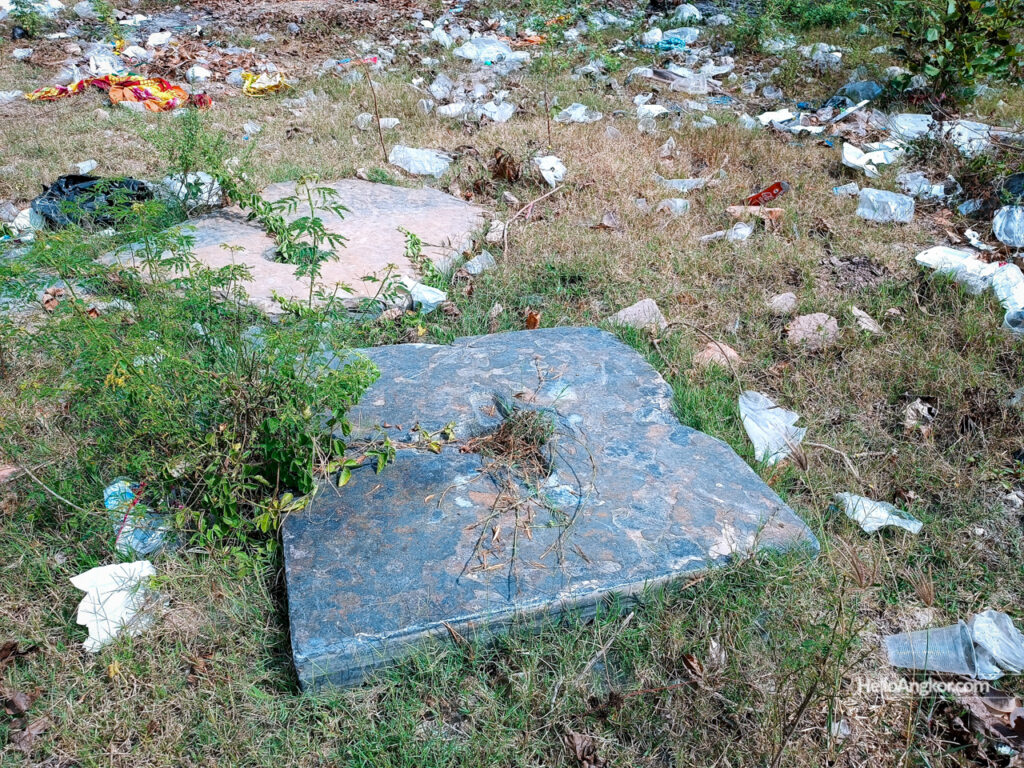
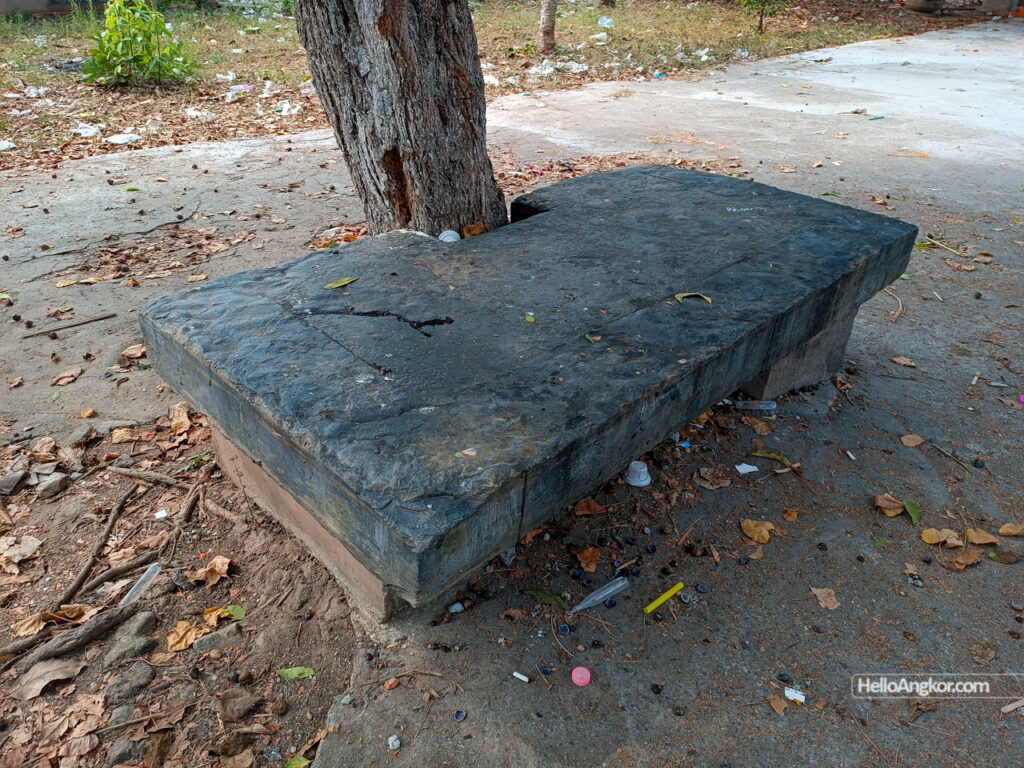
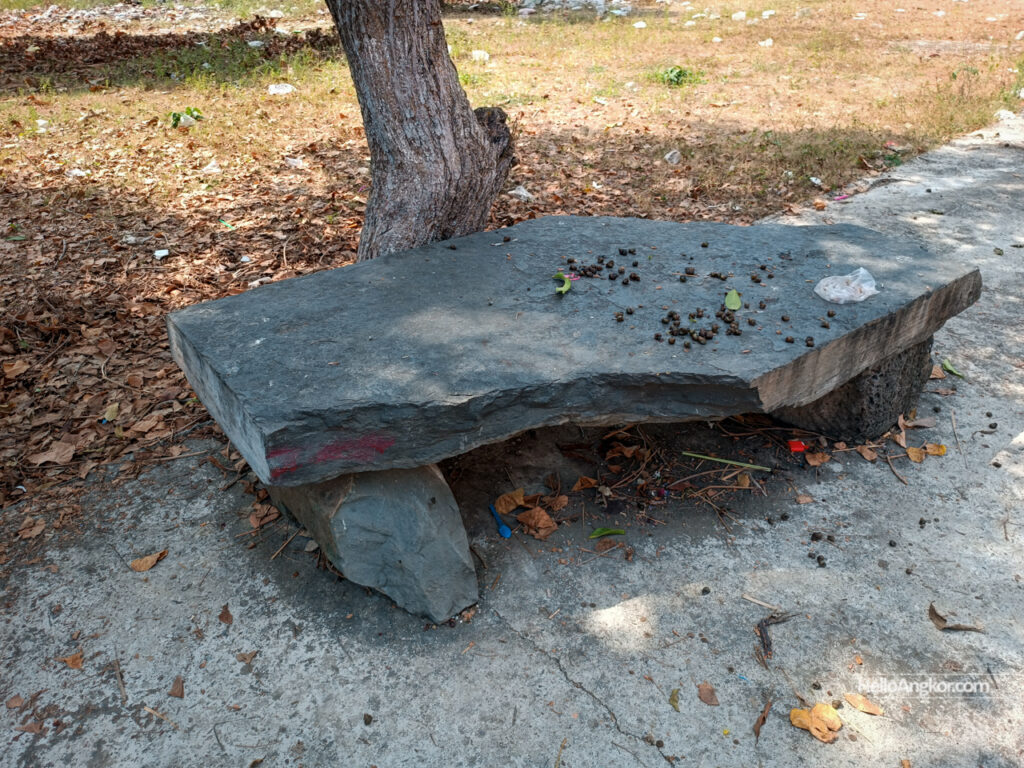
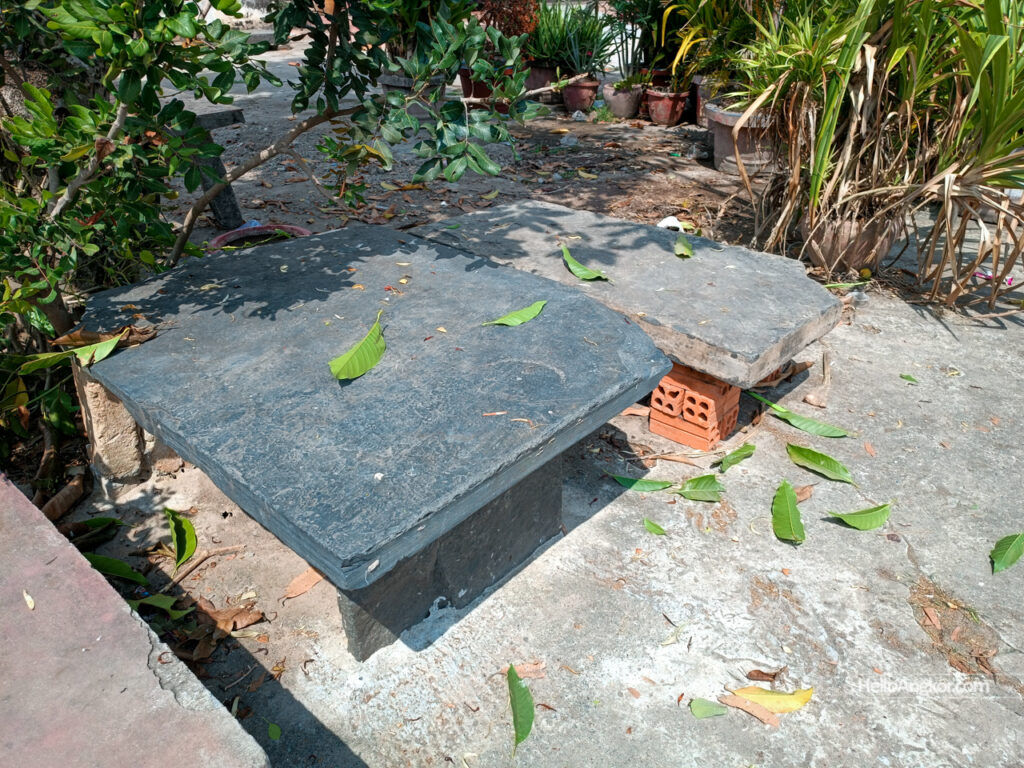
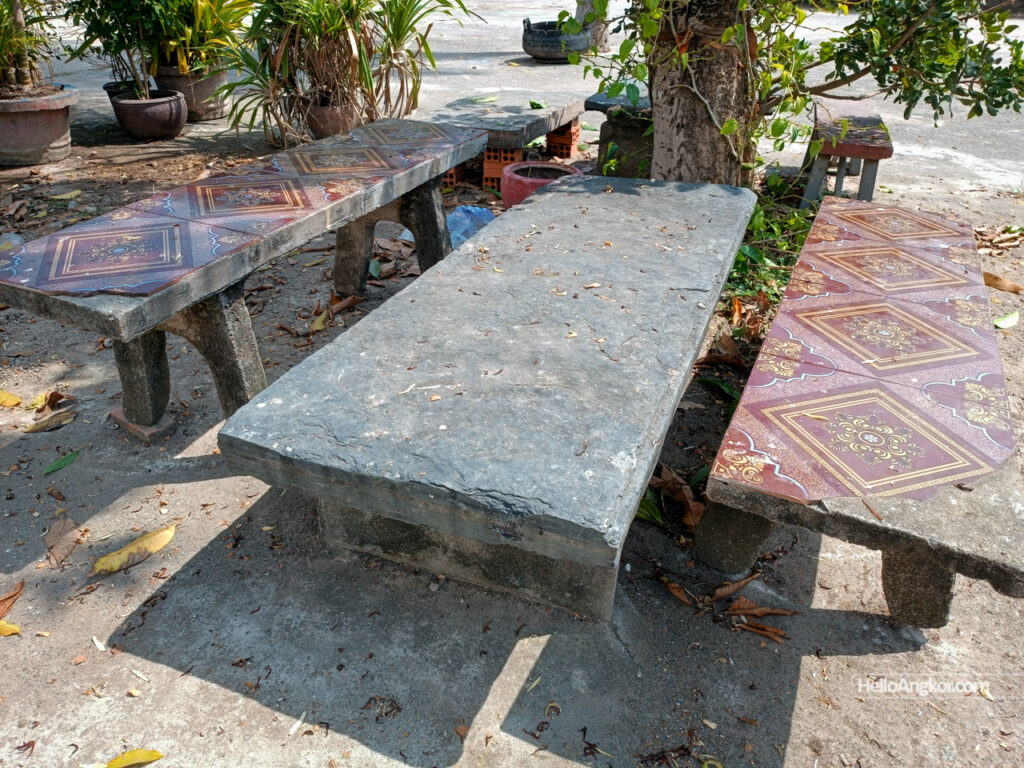
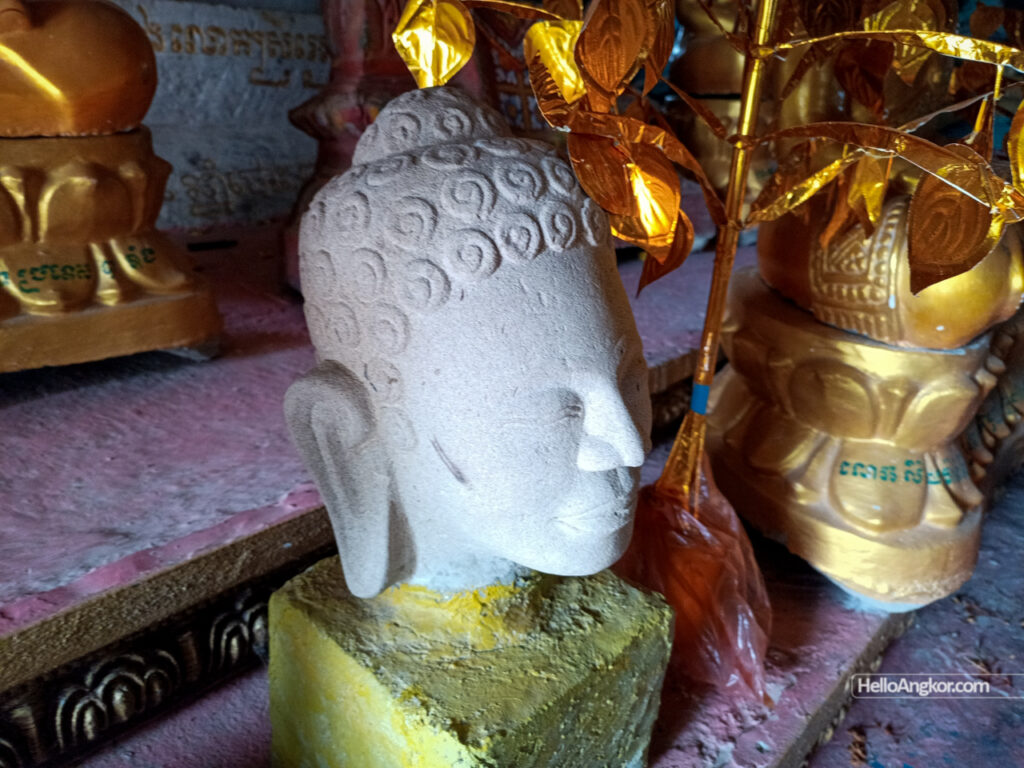
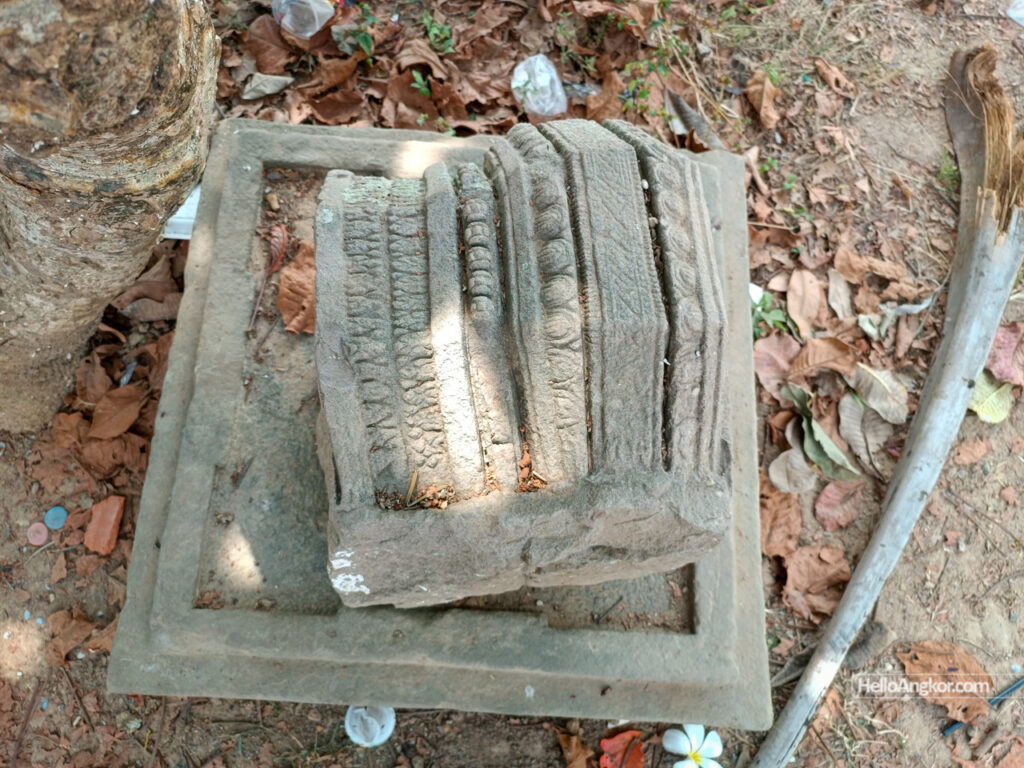
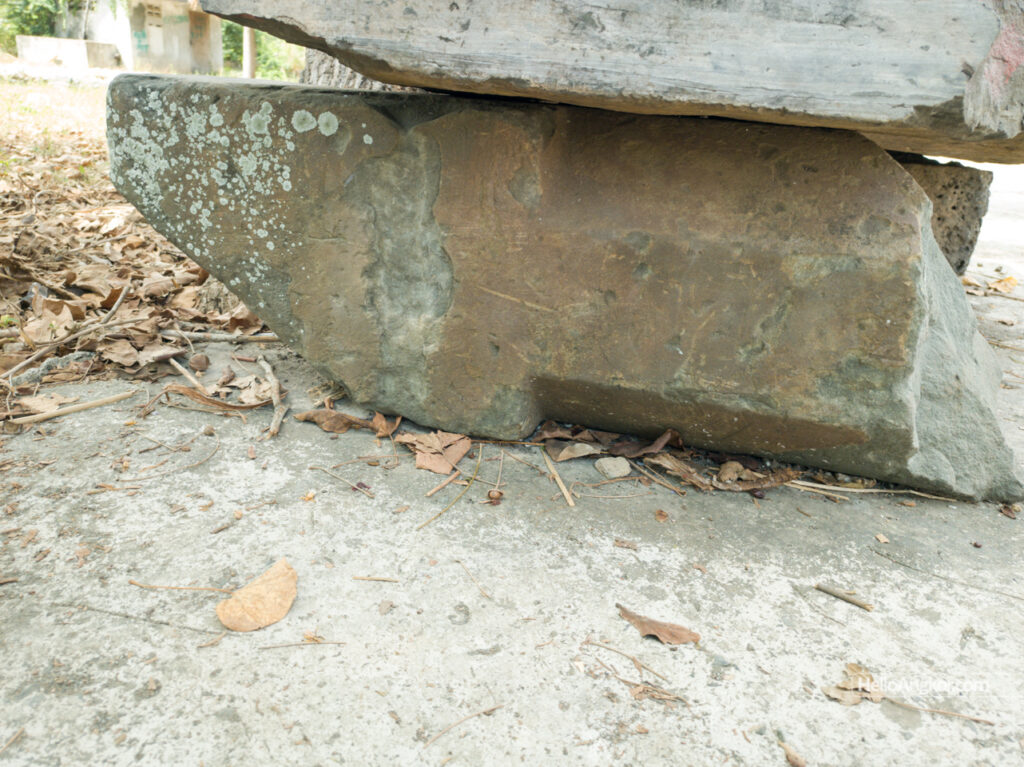
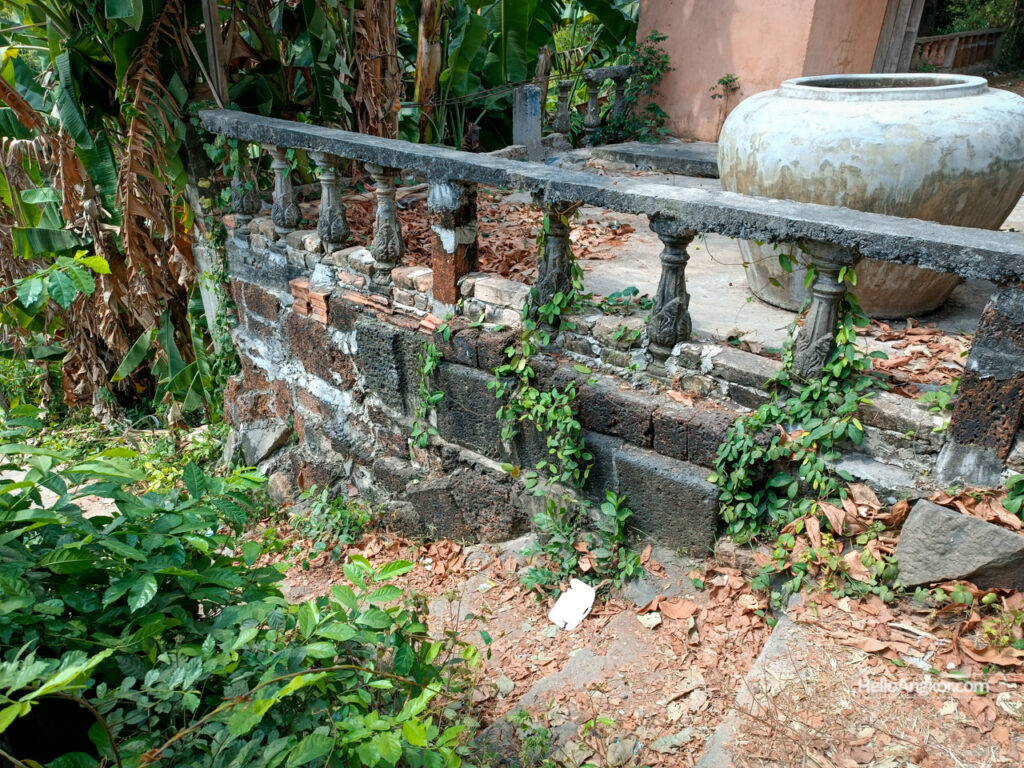

Historical Images
via Fonds Cambodge
The heads are recorded as formed of stucco with the images taken sometime around 1925. It’s quite interesting to look at these and consider those attributed to the post-Angkorian era and also art that’s widely labelled as Dvaravati.
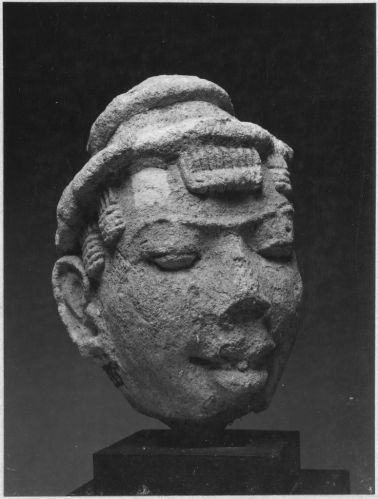
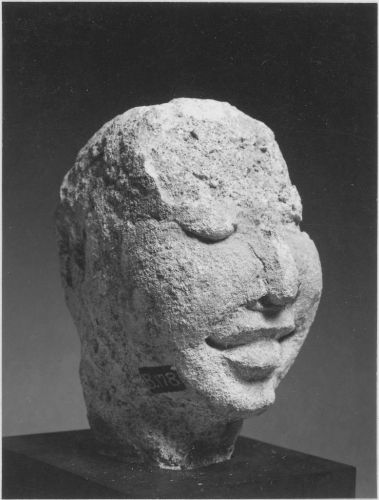
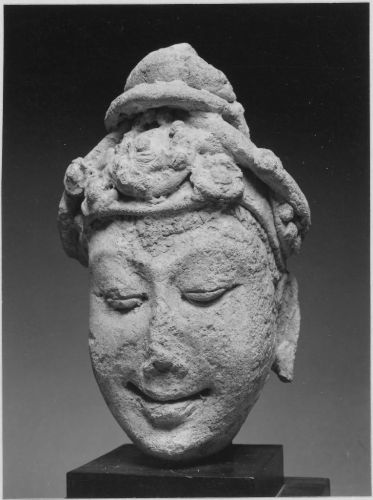
Inscriptions
K. 557 and K. 600
The 3-line fragment reproduced in the Corpus (pl. XIII) under the name Tuol Våt Komnu is in reality the south face of a large four-sided block, measuring 0.80 in height and 1.20 in side, which Mr. MAUGER stamped in 1935 on the right bank of the Ańkor Bórži river, at the height of Vắt Crôy. The North and East faces give a complete reading, but the West face is missing and all that remains of the South face is the ends of the lines.
The text in Khmer, dated 533 ç. (611 A.D.), only contains lists of servants, land (sre, counted in sanre) and domestic animals. Among the servants, we will note a certain number of musicians and dancers whose names are all Sanskrit (except two), unlike the others whose names are almost exclusively Khmer and often very contemptuous. The deities to whom these goods are offered are not all clearly named. On the North face, the first list of servants is offered to a god designated by the expression Kpoñ Kamratān Añ, and the second is to Lord Mahāganapati (Gaņeça). On the east face, donations are made to a god who is a co-participant with the Vrah Kamratan Añ Kamratan Tem Krom, and further down to Maniçvara.
Incsriptions du Cambodge, George Coedes
Contemporary Research
- The Bioarchaeology of the Vat Komnou Cemetery, Angkor Borei, Cambodia – Michael Pietrusewsky, Rona Ikehara-Quebral – 2006
- An Archaeological Study of Ancient Beads from Cambodia – Esme Hammerle – 2014
- Biocultural Practices during the Transition to History at the Vat Komnou Cemetery, Angkor Borei, Cambodia – Rona M. Ikehara-Quebral, Miriam T. Stark, William Belcher, Voeun Vuthy, John Krigbaum, R. Alexander Bentley, Michele Toomay Douglas and Michael Pietrusewsky – 2017
- Resource utilisation and regional interaction in protohistoric Cambodia – The evidence from Angkor Borei – Louise Shewan et al – 2020
- Ancient DNA from Protohistoric Period Cambodia indicates that South Asians admixed with local populations as early as 1st–3rd centuries CE – Piya Changmai et al – 2022
Map
Site Info
- Site Name: Komnou (V.) Khmer Name: វត្តគំនូរ
- Reference ID: HA14138 | Posted: January 19, 2021 | Last Update: April 3rd, 2024
- Other Names: Tuol Vat Komnu, Vat Komnou
- Tags/Group: Angkor Borei, T23, Temples, Wat
- Location: Ta Keo Province > Angkor Borei District > Preaek Phtoul Commune > Kâmpong Pô Village
- MoCFA ID: 4557
- IK Number: 17.07
- Inscription Number/s: K. 557, 600

